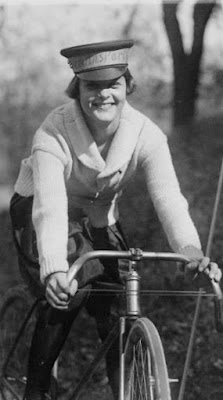March is Women's History Month. As I've mentioned in other posts, the bicycle--as Susan B. Anthony herself said--has played an important role in liberating women. It led to a revolution in the way we dress--freeing women from corsets, hoopskirts and bustles--which, in turn, gave us more independence and mobility, not only into the physical places where we could go, but also in what we could do for paid work (or whether or not we could do paid work at all!) as well as in our free time.
It also took us on our path toward something that, in the US, only men were allowed to do from 1776 until 1920--and a right given only to white men until 1865. I am talking, of course, about voting. Almost nobody would dispute that when women were able to partake of the other liberties I've described, it made it possible for even the most conservative men to realize that we have the powers of discernment derived from life experience that give us at least the same ability to decide what is best for our selves, families, communities and nation as the other 49 percent of the population.
What can't be overlooked, however, are the mundane tasks women performed as part of the project of achieving the right to vote. Here is a bike messenger--in bloomers, one of the sartorial innovations wrought by women on bicycles--at work for the National Women's Party headquarters:
 |
| From the National Women's History Museum |
Okay, I'll admit that today's post is, at least in part, an excuse to post that image! She looks about as happy as anyone I've seen in doing her work. And well she should have been.
No comments:
Post a Comment